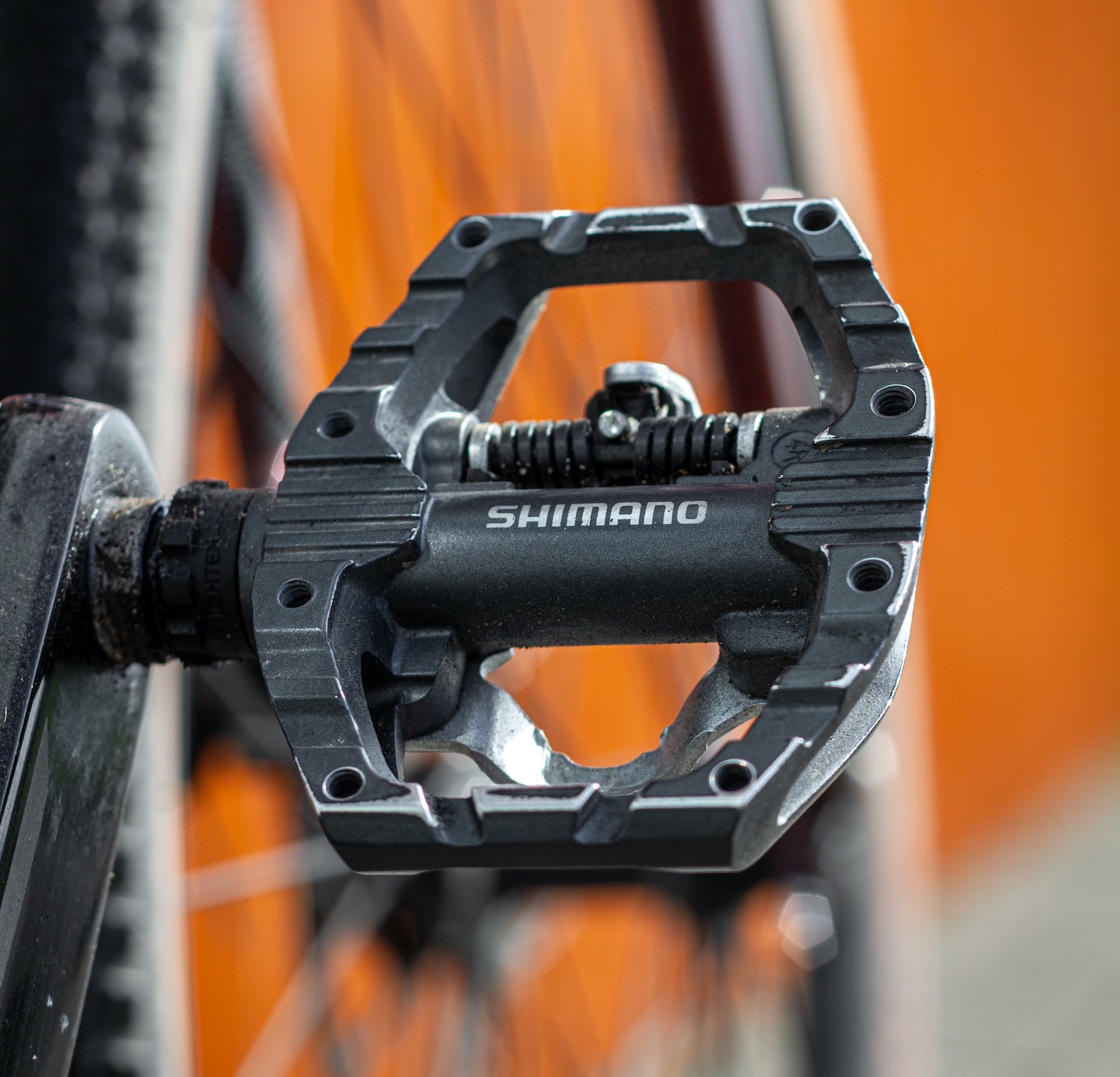Regarding tracking your cycling performance, power meters have been a game changer for serious cyclists. A power meter provides accurate, real-time feedback on your pedaling cadence, the total power output of your pedaling, the amount of time spent pedaling at specific wattages, and more. Investing in a power meter can be daunting, but the data gathered can be invaluable in developing a tailored training plan specifically for you. This article aims to provide an introduction to power meters and the immense benefits they can offer riders.
What Is a Power Meter?
A power meter is a device that measures the power output of a cyclist as they ride. It is used to measure the amount of power or work performed by the cyclist in terms of watts. This information is helpful for cyclists as it allows them to track their performance and measure changes in power output over time.
Different Types of Power Meters
Power meters come in various forms. The most popular type is the crank-based power meter, which measures the power a cyclist produces when pedaling. Pedal-based power meters measure the power produced by each pedal stroke, while hub-based power meters measure the combined power of both pedals. Other power meters, such as hub dynamometers, measure power in real-time, while others are integrated into the bike frame and measure power every time the cyclist shifts gears.
Features of Power Meters
Power meters have many features that make them beneficial to cyclists. Many models allow cyclists to monitor their power output during a ride, track their progress over time, and compare their performance with other riders. Some models also have a built-in GPS feature, allowing cyclists to measure their speed accurately, distance traveled, and the route taken.
Benefits of Power Meters for Cyclists
The data from a power meter can be used to improve a cyclist’s overall performance. By using a power meter, cyclists can better understand their weaknesses and strengths, allowing them to tailor their training to maximize their performance.
In addition, power meters provide an objective performance measure, allowing cyclists to accurately compare their performance with other riders. This can help cyclists identify areas of improvement and adjust their training regimen to ensure they are getting the most out of their workouts.
Power meters are also a tool that can be used to help optimize racing strategies. By accurately measuring a rider’s power output, cyclists can craft an approach that considers their abilities and the terrain they’re riding over. This can help them select the best route to complete a race in the fastest time possible.
Overall, power meters are a helpful tool for cyclists looking to increase their performance and optimize their racing strategies. By measuring power output in watts, cyclists can track their progress and make necessary adjustments to their training and racing strategies.
Advantages of Using a Power Meter
Power meters for bicycles offer riders an unprecedented ability to monitor their bike performance accurately. By measuring the force of each pedal stroke, power meters provide unparalleled detail regarding how a cyclist is performing. This data can help cyclists set and reach training goals, identify their weaknesses, and gain a better understanding of their strengths.
Power Meters Enhance the Training Process
Power meters are essential tools for cyclists serious about tracking and improving their performance. By measuring the force of each pedal stroke, power meters give cyclists detailed, objective data that can be used to identify opportunities for improvement. This data can be used to determine areas to target in training and measure the effectiveness of different training strategies. This means that cyclists can more effectively target the areas of their performance that need improvement and find out what works best for them and what doesn’t.
Monitoring Progress with a Power Meter
Power meters offer cyclists the ability to monitor their progress in training objectively. By taking regular measurements and tracking them over time, cyclists can quickly see how their performance is improving or declining. This helps cyclists stay motivated and identify any significant changes in their performance that may require further investigation.
Improved Insight into Performance and Efficiency
Power meters provide cyclists with detailed insights into their performance, pedaling efficiency, and muscular endurance. By measuring the force of each pedal stroke, power meters provide cyclists with a wealth of data that can be used to identify problems with their technique and areas that may lag due to fatigue or lack of training. This data can be used to hone techniques and identify areas that may require extra attention and effort.
Reduced Injury Risk and Improved Performance
Power meters can provide cyclists with valuable information that can help them reduce the risk of injury and improve their performance. By monitoring their performance with a power meter, cyclists can identify areas that may lag or need to be strengthened. This can help to reduce the risk of injury, as well as help cyclists improve their performance.
Competitive Edge Through Power Meters
Power meters can give competitive cyclists a significant edge over their competitors. By providing detailed data regarding their performance, power meters can give cyclists the information they need to optimize their performance and become more competitive. This can be especially beneficial for cyclists competing in time trials or other competitive events, as it can help them gain an edge over their opponents.
Types of Power Meters
A power meter is a device used to measure power output while riding a bike. Power meters are designed to measure and display a rider’s power output in watts as they ride. Power meters are popular among competitive cyclists, triathletes, and riders seeking accurate performance measurements. They are also helpful for athletes who wish to train using specific data to improve their performance.
Advantages of Using a Power Meter
Using a power meter gives cyclists unparalleled insight into their performance. With a power meter, riders can track and monitor their power output on a ride-by-ride basis or for months or years. This data can be used to monitor and improve a rider’s performance. Power meters also allow cyclists to compare their performance to other cyclists accurately. Additionally, power meters can be used beyond performance tracking to set more accurate riding goals, and they can help cyclists identify areas that require improvement.
Types of Power Meters
Power meters come in various forms and technologies, depending on the intended use. For example, crankset-based power meters, such as SRM and Quarq, measure a rider’s power output from the power being applied to the cranks. Other popular power meters include wheel-based units, such as PowerTap and Velocomp, which measure energy in the wheel’s hub. Finally, there are chainring-based power meters, such as Stages, that measure power from the chainring. Each type of power meter has its advantages and disadvantages, depending on the application.
Comparing Power Meters
When deciding which power meter to purchase, cyclists should consider the advantages and disadvantages of the different technologies. For example, crankset-based power meters are generally more accurate than their wheel-based counterparts but are also usually more expensive. Some power meters use sophisticated computer technology and data analysis, while others are simpler and more basic. Ultimately, the type of power meter to purchase should depend on the cyclist’s specific needs and budget.
Using a Power Meter
Once a power meter has been purchased, it is essential to follow the manufacturer’s instructions for using and maintaining the device. Using the meter consistently and accurately is vital to get the most out of the data collected. Additionally, it is beneficial to connect the power meter to a smartphone or other device to track and analyze the data. With a power meter, cyclists can make improvements to their performance and reach their goals.
How to Set Up a Power Meter
Power meters are increasingly popular tools for cyclists, providing real-time performance data that can help them optimize their training and racing performance. Here’s what you need to know if you’re thinking about setting up a power meter on your bike.
Choosing a Power Meter
First, you’ll need to select a power meter that works for your bike. Several types of power meters are available, from crank-based systems to wheel-based power meters. Consider compatibility, accuracy, battery life, and price when selecting a power meter.
Installing the Power Meter
Once you’ve selected a power meter, you’ll need to install it. The installation process varies depending on the type of power meter you’ve chosen. Some models require professional installation, while others can be installed easily at home. Make sure you consider safety and read the installation manual carefully before starting.
Pairing the Power Meter and Computer
After installing your power meter, you’ll need to pair it with your cycling computer. This is usually done via Bluetooth, though some models may require ANT+ compatibility. Once the device is paired, you should be able to use your power meter with your cycling computer.
Calibration and Maintenance
In some cases, you may need to calibrate your power meter, especially if it’s been installed recently or if it’s been moved to a new bike. Calibrating your power meter ensures the accuracy and reliability of the data it collects. You should also ensure that your power meter is regularly serviced and maintained for optimal performance.
Following these steps, you can set up a power meter on your bike and gather valuable performance data. A power meter can take your cycling performance to the next level.
Training with a Power Meter
Using a power meter allows riders to record all the essential data needed to accurately assess the performance of a ride, such as wattage and a cadence. Knowing this data will enable riders to set realistic goals for improvement and build a training program tailored to their individual needs. Power meters provide riders with real-time feedback during their ride, so they can adjust their effort as needed to exercise most efficiently.
Measuring Performance Progress with a Power Meter
Power meters allow riders to track their performance’s progress over time easily. Riders can compare their performance from different rides and see if they are meeting their goals. They can also graph their performance over time to identify changes in their riding performance and see how they responded to a particular training program. This type of information can be invaluable in helping riders identify issues and find areas where they can continue to improve.
Using a Power Meter to Improve Riding Efficiency
Using a power meter can help riders become more efficient riders. By measuring power output, riders can determine the most efficient way to ride, saving energy and increasing speed. Riders can also use the data to target specific muscle groups and adjust their technique in order to generate more power. This can result in significant improvements in performance and efficiency across a variety of conditions and terrain.
Understanding the Benefits of Power Meters
Power meters are an invaluable tool for any rider looking to improve their performance. By tracking and analyzing riding data, riders can identify areas for improvement and build an effective training program. Power meters also provide riders with real-time feedback during their ride, allowing them to adjust their efforts as needed and become more efficient. With the right training and a power meter, riders can increase their speed and reach their fitness goals.
Measuring Progress with a Power Meter
Power meter technology is a device used by cyclists to measure the power output of a rider on the bicycle. It is used to determine the cyclist’s performance and measure the efficiency of their training. A power meter measures a cyclist’s power output, in watts, during a certain amount of time. The power output is then calculated to calculate the average or peak power the rider achieves. The power meter also records the duration of the ride and energy expenditure so that the data can be used in training and performance analysis.
Gaining Insight Into Your Cycling Performance
Power meters provide valuable insight into a cyclist’s performance. Riders can compare their power output to that of other riders, compare it to past rides, and track their performance over time. Riders can use this data to create training plans, set performance goals, and track their progress. Power meters allow cyclists to see where they can improve their pedaling technique, cadence, and overall power output.
Measuring Progress with a Power Meter
Power meters can be used to measure progress toward a performance goal. The power output data collected can compare a cyclist’s performance on different days, over longer rides, and even with other techniques. By organizing and analyzing the data, riders can identify areas for improvement and measure their progress over time. Additionally, power meters can help riders discover their optimal power output range and make necessary adjustments to their training and performance.
Understanding Power Output Data
Understanding the information a power meter provides is essential for riders who want to make the most of their device. Power output data is typically displayed as average power, peak power, total work, normalized power, and cadence, among other metrics. This data can be used to understand the rider’s intensity, efficiency, and power output performance. Moreover, the additional information provided can give insight into the rider’s strengths, weaknesses, and areas of improvement.
The Benefits of Power Meter Technology
Power meters provide many benefits for cyclists who want to reach their performance goals. With power meter technology, riders can access a vast amount of data to understand their performance better and adjust their training. Power meters also provide valuable insight into a rider’s technique, highlighting areas of improvement and helping riders focus on their strengths. Ultimately, the accuracy and precision of power meter technology can help cyclists reach their performance goals faster and more efficiently.
Maximizing Your Benefits From Power Meters
Using a power meter to track your cycling performance can provide you with valuable information that you can use to fine-tune your training and nutrition. Understanding what a power meter measures, how to interpret the data it provides, and how to use it to improve your performance are crucial to maximizing the benefits of power meters. Whether you’re an experienced cyclist or new to the sport, having a power meter can help you reach your goals and improve your performance. With the proper knowledge, you’ll be better equipped to measure and improve your performance.






Leave a reply